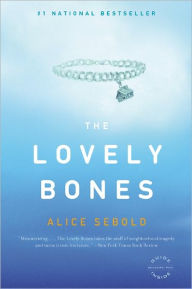 |
| Link to B&N |
About two-thirds through, however, I thought the balance had slipped, and I was starting to thumb through the coming of age stuff, wondering why there wasn't more on the crime. Everyone has their own tolerance level, I suppose, but there was too much sex for me, and it started to feel icky. Voyeuristic. Gratuitous. Ultimately, the "crisis" of the book is sex, not justice, and this felt wrong, at least to me. The criminal is not painstakingly, laboriously hunted down, but quietly shoved off stage, as it were, in the last moment.
What is brilliant about the book is the psychological insight into a wide variety of characters - the innocent and the guilty, female and male, young and old. Sebold's glimpses into the killer's mind and life, the description of the initial, horrible crime, were extraordinarily well done. I found the conclusion less satisfying, in particular the passage about "lovely bones" as a metaphor for the new life and connections built by the survivors which in the end Susie finds beautiful. I understand the impulse to find some good coming out of something dreadful, but I think it is wrong. I thought what Sebold captured so well in the beginning was the horror, the everyday, inelegant horror, and I wished she had stayed there.
No comments:
Post a Comment